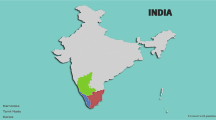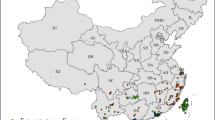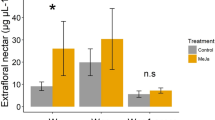Abstract
IN 1924 McDonald1 and Welsford2,3 reported the presence in Kenya, Tanganyika and Zanzibar of widespread damage of coconut fruits characterized by abortion of young female flowers, excessive dropping of young nuts and formation of necrotic lesions in those nuts which reached maturity. The damage was attributed to unfavourable soil conditions.
This is a preview of subscription content, access via your institution
Access options
Subscribe to this journal
Receive 51 print issues and online access
$199.00 per year
only $3.90 per issue
Buy this article
- Purchase on SpringerLink
- Instant access to full article PDF
Prices may be subject to local taxes which are calculated during checkout
Similar content being viewed by others
References
McDonald, J., Ann. Rep. Kenya Dept. Agric., 106 (1924).
Welsford, E. J., Ann. Rep. Dept. Agric., Zanzibar., 15 (1924).
Welsford, E. J., Tech. Conf., E. African Dependencies, Nairobi., 205 (1926).
Phillips, J. S., Bull. Ent. Res., 31, 295 (1940).
Friederichs, K., Tropenpflanzer, Berlin, 23, 142 (1920).
Simmonds, H. W., Fiji Dept. Agric., Bull. 16 (1925).
Tothill, J. D., A Reconnaissance Survey of Agricultural Conditions in the British Solomon Islands Protectorate (Fiji, 1929).
Murray, G. H., New Guinea Agric. Gaz., 3, 1 (1937).
Author information
Authors and Affiliations
Rights and permissions
About this article
Cite this article
WAY, M. An Insect Pest of Coconuts and its Relationship to Certain Ant Species. Nature 168, 302 (1951). https://doi.org/10.1038/168302b0
Issue date:
DOI: https://doi.org/10.1038/168302b0



